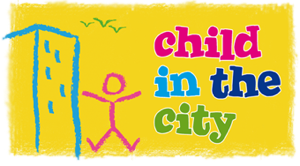Parallel session: Play/Playground (11:30-13:00)
Presentation 1: Adventure Playground Robinson Island by Wiener Kinderfreunde
Presented by: Gerhard Schuster
Abstract: The “Robinson Island” in the 19th district of Vienna, is a close-to-nature adventure playground consisting of 7,000 square meters of space for leisure time and environmentally friendly activities for children and young people between the ages of 5 and 14. Children choose and experience for themselves creative activities in nature. Play equipment and projects, mainly of natural materials, are planned and developed with the children. Creative work with natural materials, gardening, games such as treasure hunts and paper-chases involving the whole area, are important and popular programme elements. The result is new, attractive elements of the playground: e.g. biotope, climbing structures, “trails of the senses”, sand-pits, mud or clay dens, giant marble-runs, wooden huts with roof-greening and mushroom cultivation, sheds for big building blocks with climbing plants. True to the method of explorative learning the children deal with subjects of nature and environment in a playful fashion and are given the necessary stimulation and guidance by the environmental and leisure-time play-workers.

Presentation 2: Parks, Playgrounds and Happiness
Presented by: Marini Widowati
Abstract: The parks and playgrounds are part of the children domain in the public realm, in which are undoubtedly essential to give a good opportunity for children to grow up well in the city. Unfortunately, in the production of spaces in the city, in most cases, children spaces are not taken seriously in the planning process. Children presence are most likely hidden in the city. The Netherlands are among the ten happiest countries under the closest encounter of the Scandinavia countries based on the world happiness report 2017. The second largest city in the Netherlands, the city of Rotterdam, has paid numerous attention on the provision of children spaces in the city, as the city aims to create a more livable city and invite young families with children. The children spaces have been provided ranges from schools, daycares, clinics, sport and culture facilities, parks and playgrounds up to pedestrian pathways, bicycle routes and public transport accessibilities. However, how do the children domain in the public realm affect happiness of the residents in the city of Rotterdam? The mix method research on how children domain in the public realm affect happiness in the city of Rotterdam shows that there is a significant influence on the presence of parks and playgrounds from home to the happiness of the residents. The result can be used by the city authority to be focus on what influences are significant in what trends, and moreover, may help improving the cost and benefit of the program on providing children spaces in the city.

Presentation 3: Designing for Play: challenges and opportunities in 2018
Presented by: Beth Cooper
Abstract: This presentation is based on Design for Play, the ground-breaking guidance on designing playgrounds and more play-friendly public spaces in England. Design for Play aims to enable designers and commissioners to base design play spaces on children’s needs and wishes, rather than be driven by concerns about maintenance and reducing risk. Design for Play sets out a process for planning and procuring playgrounds, along with guidance on making public spaces more play-friendly, based on 10 Design Principles and using best practice examples to illustrate. Ten years on, we can now see which of the new play spaces have been successful and thrived; which have encountered challenges and even some that have been removed or replaced. This enables us to consider and share lessons learned and to identify challenges and opportunities going forward. Reduced commissioning budgets also mean that those designing for play must take a best value approach to ensure maximum play value for money. Small interventions and adaptations can make a big difference to children’s ability to play in the public realm. This presentation will be based on photos and discussion of play spaces in England.

